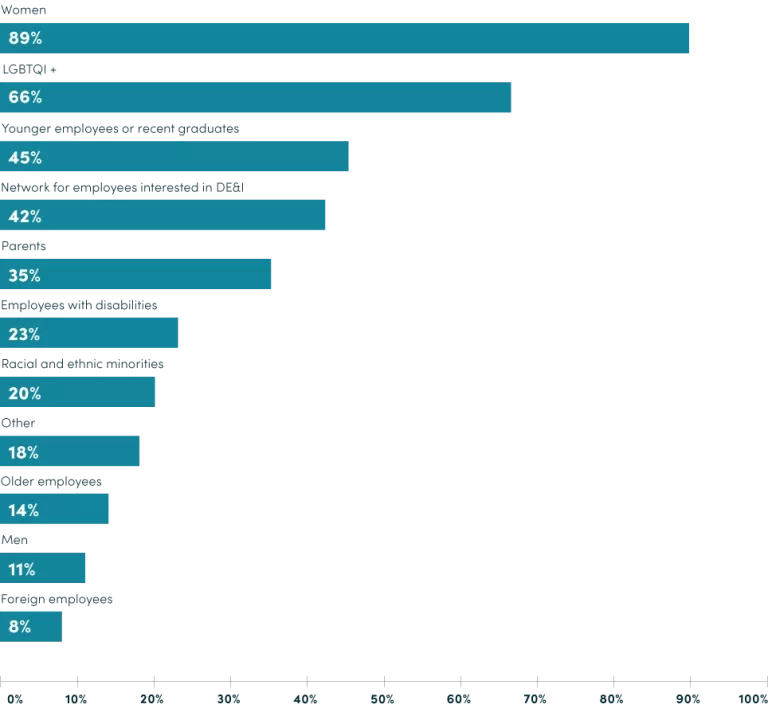Gender remains the most mentioned diversity dimension in company strategies, maintaining its status as a top priority and gaining greater visibility compared to the 2024 report. Age continues to rank second, showing ongoing focus across organizations. Notably, persons with disabilities or illnesses now receive more recognition, with their inclusion nearly matching that of nationality and race and ethnicity. However, the percentage of companies explicitly mentioning sexual orientation has decreased, indicating a shift from its previously stronger presence in last year’s report. Mentions of religion, language, diversity of skills, and education remain limited, with little change from the previous year. These shifts suggest that while many companies strengthened their focus on long-recognized dimensions such as gender and age, discourse on dimensions may not be as intersectional as in the past.

Most companies still offer employee networks for women, followed by networks for LGBTQI+ employees and younger employees or recent graduates. Despite a decline in the strategic emphasis on sexual orientation, 66% of companies in 2024 continued to maintain ERGs for LGBTQI+ staff. Networks for employees interested in diversity and inclusion, as well as those for parents and employees with disabilities, are less commonly reported. While overall coverage varies, these groups continue to serve as vital spaces for connection, support, and inclusion across different aspects of identity.
